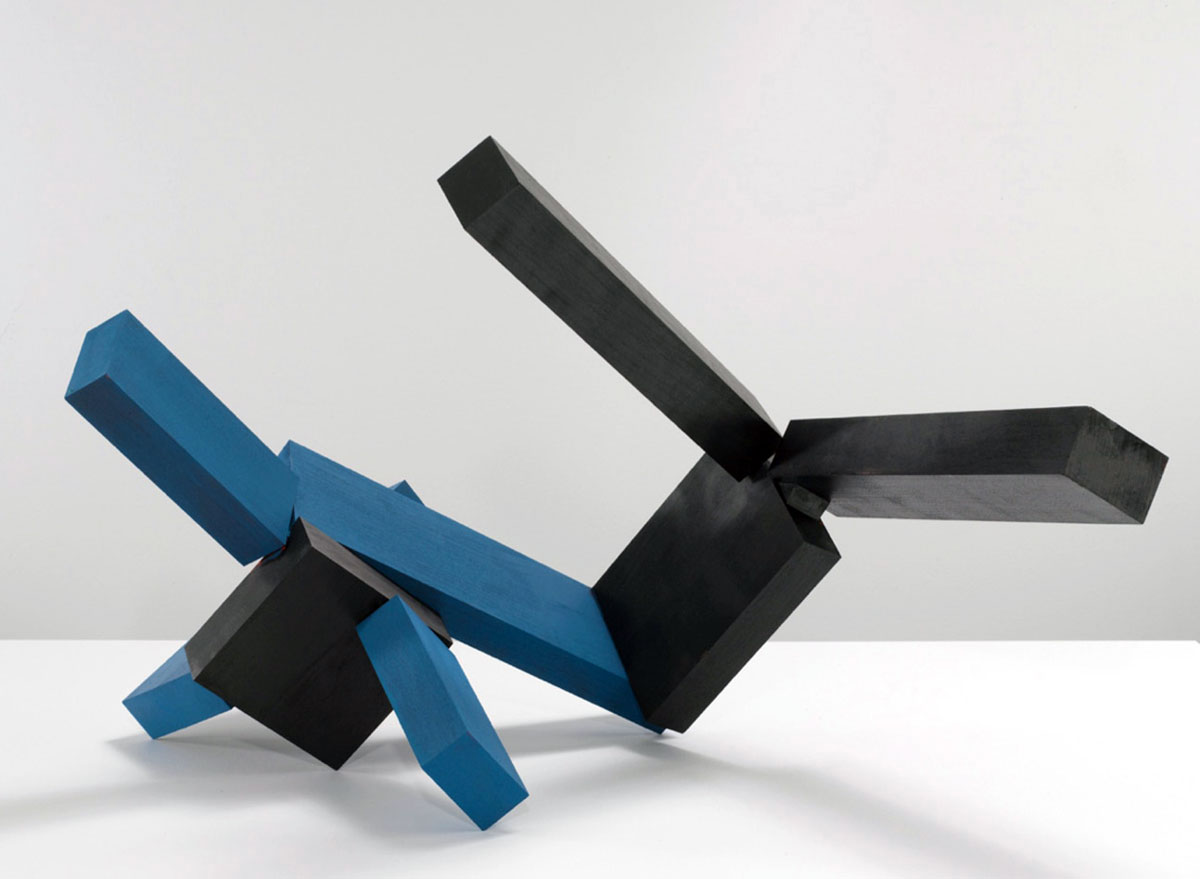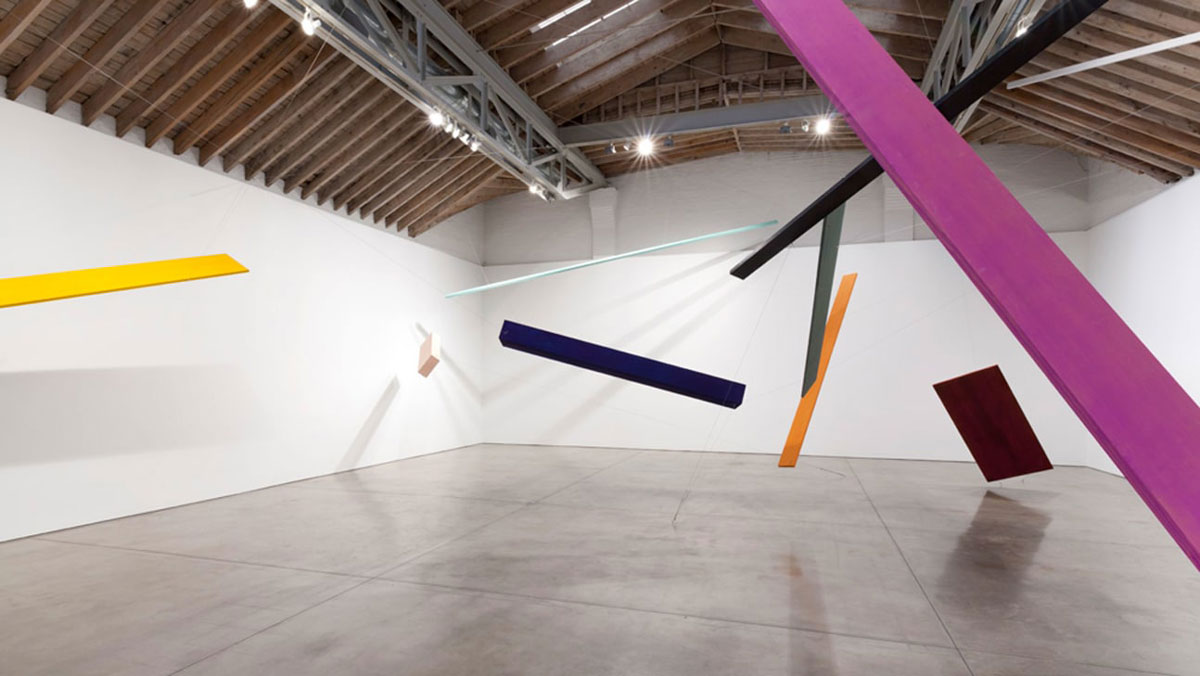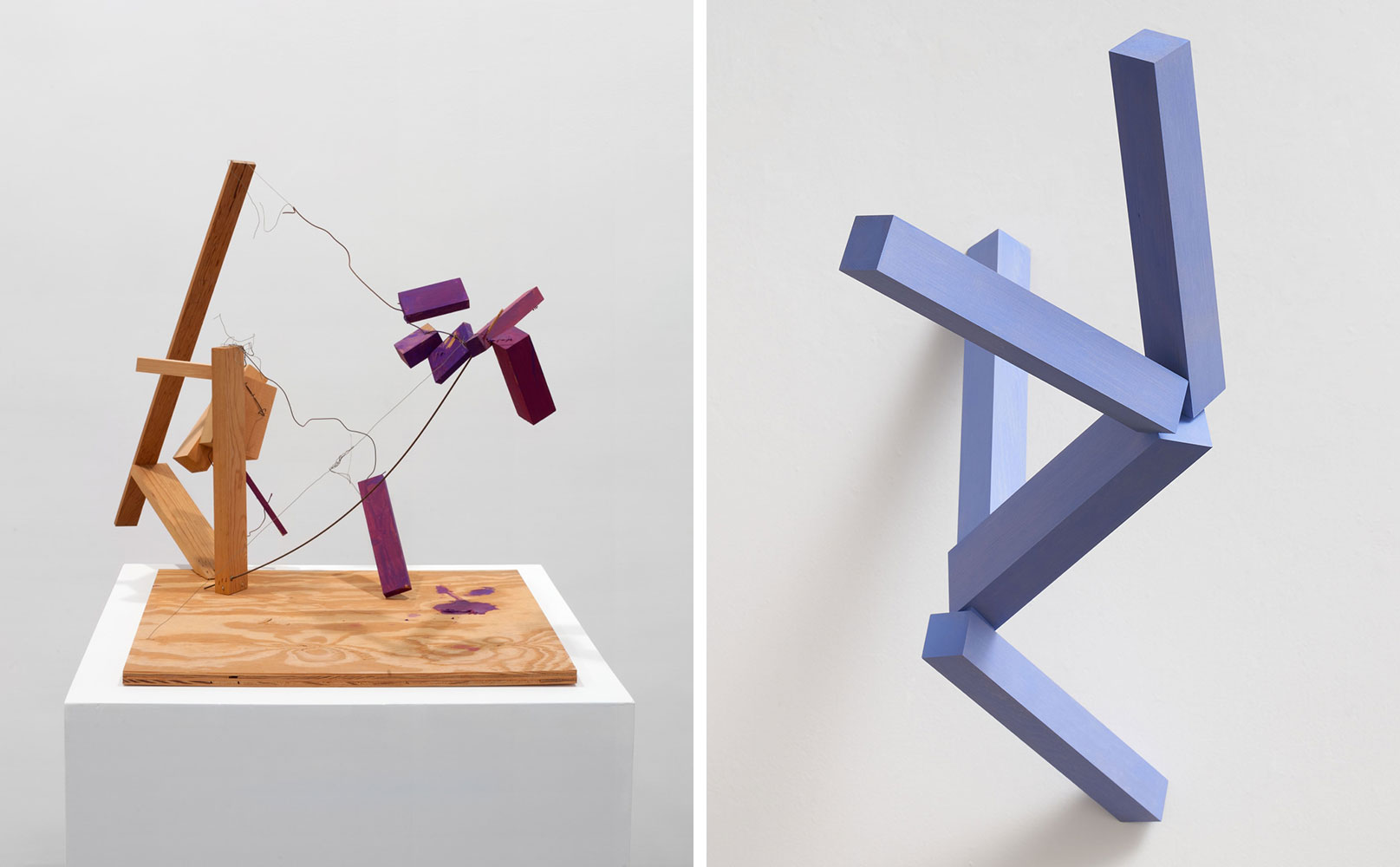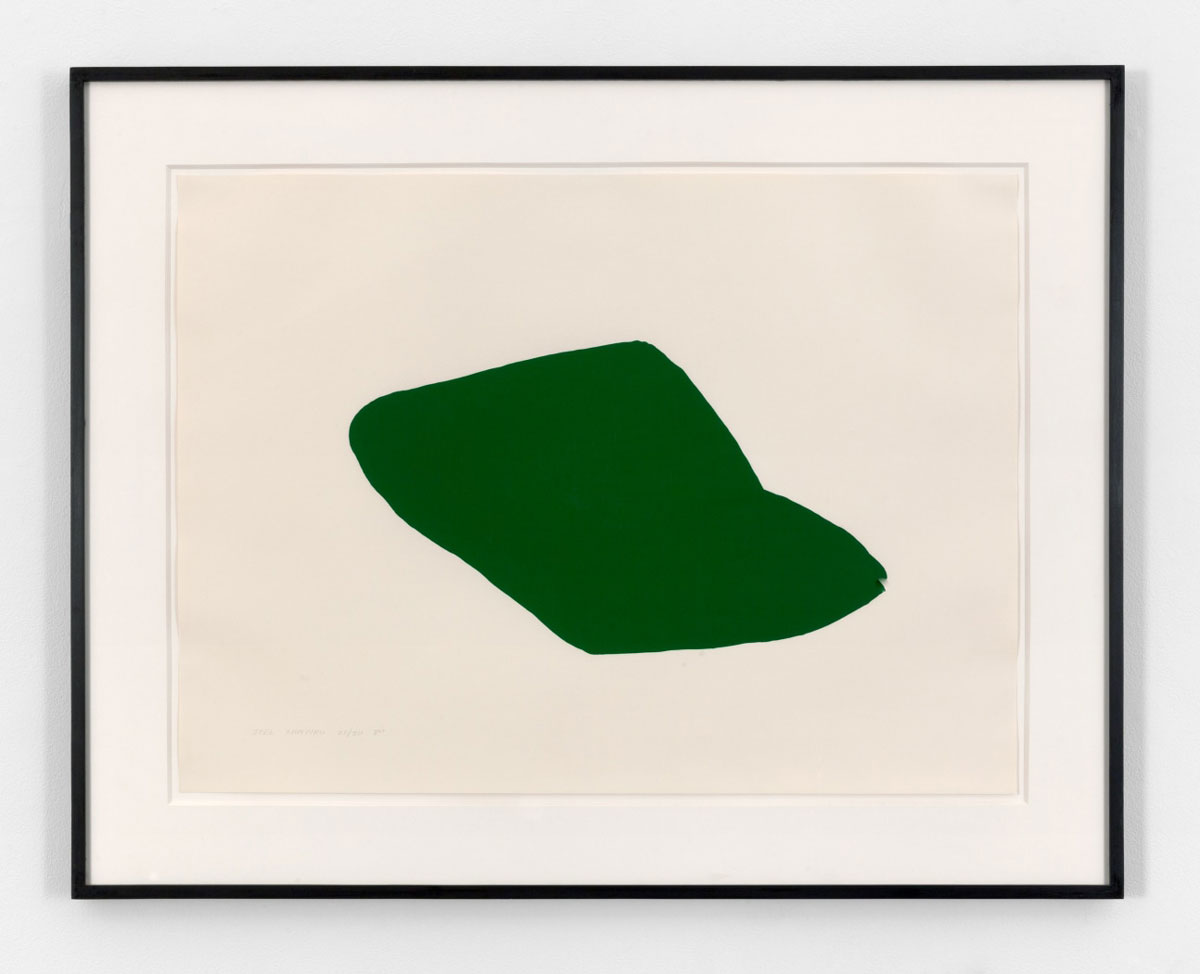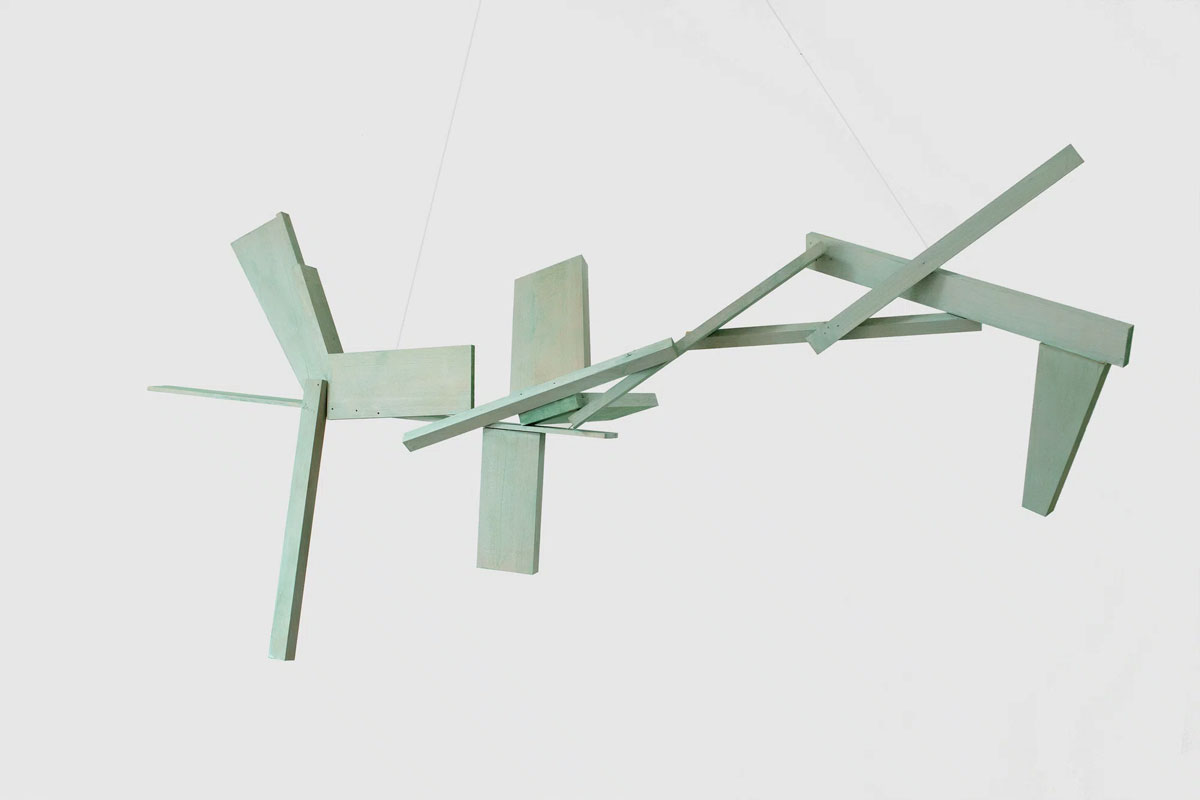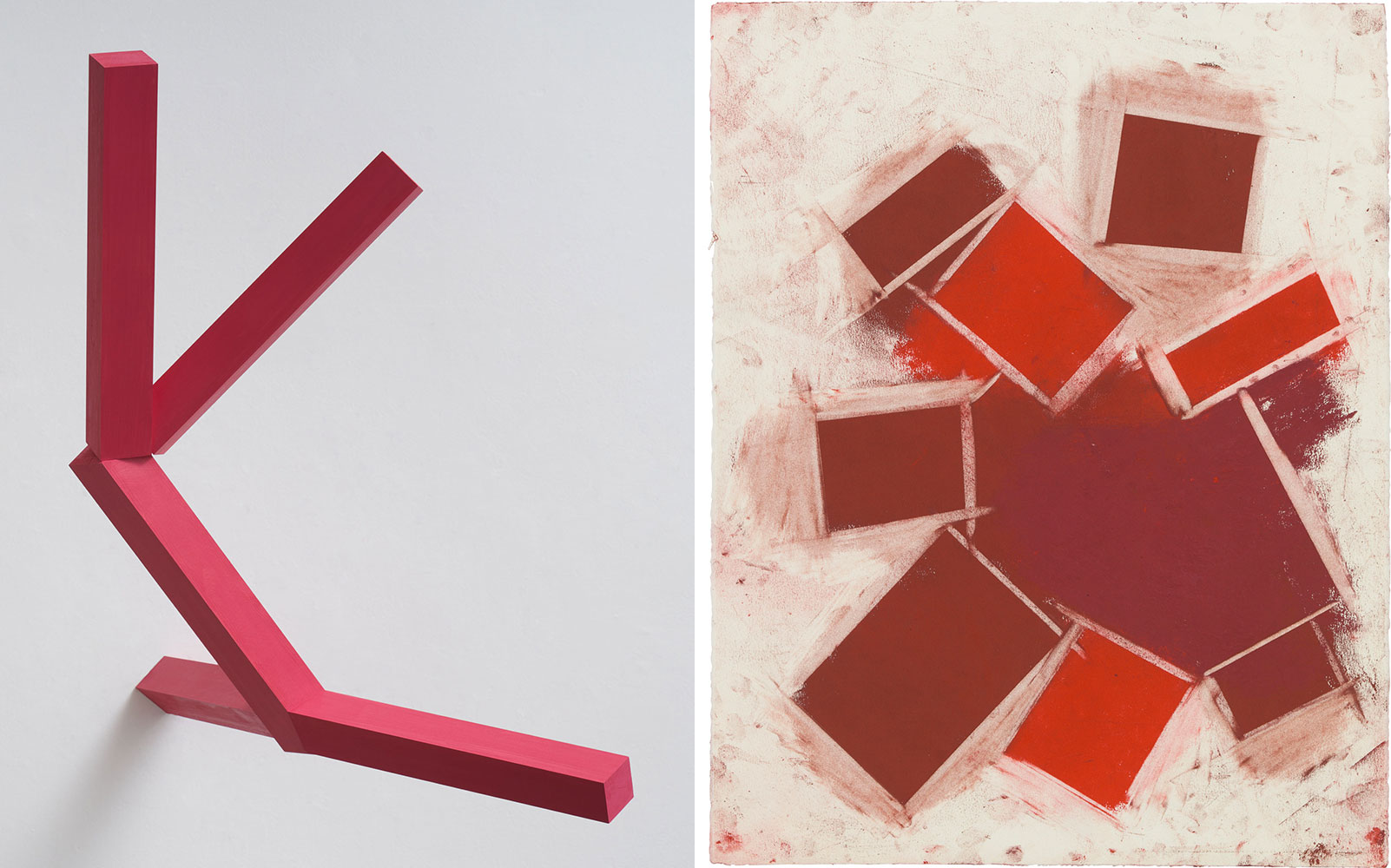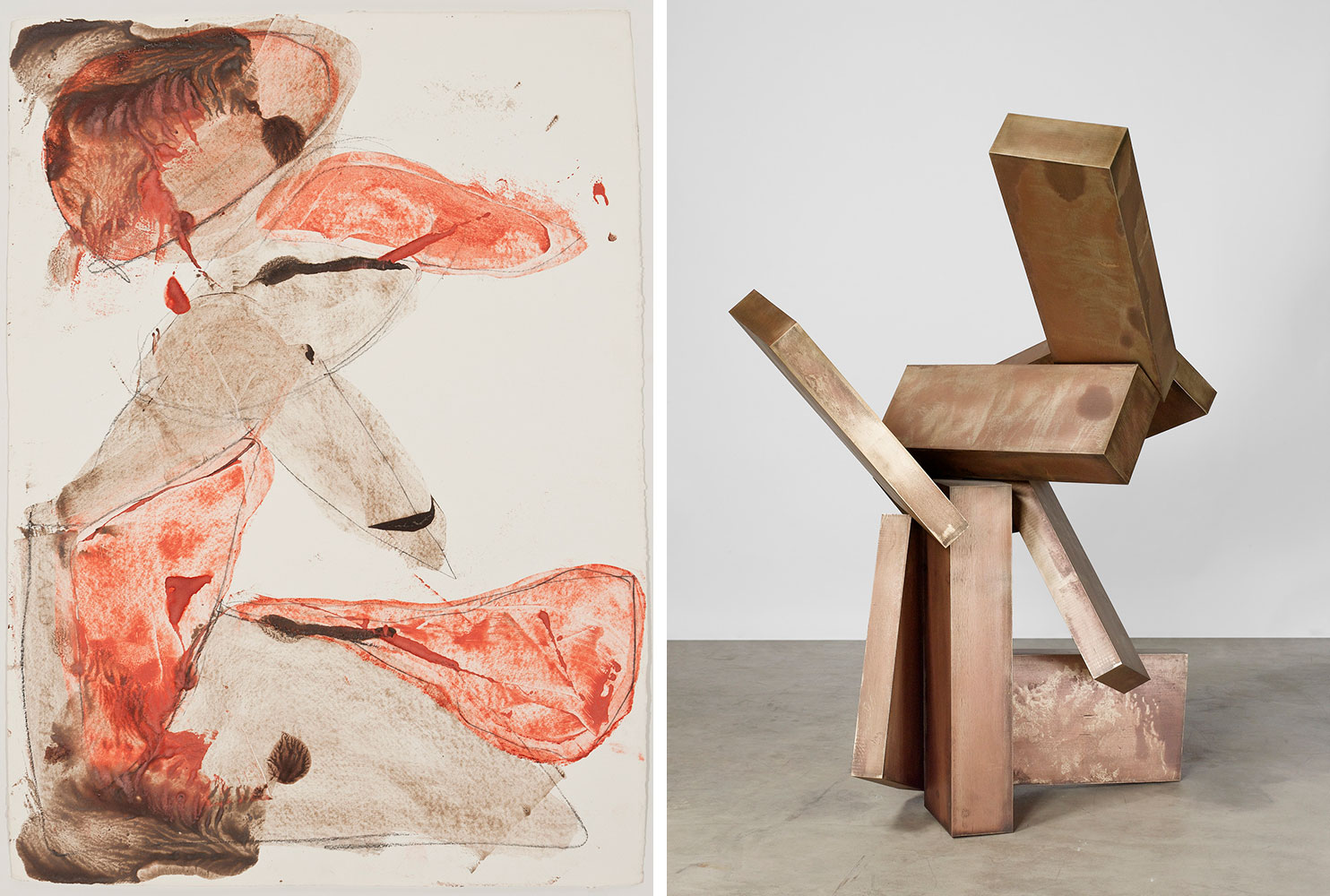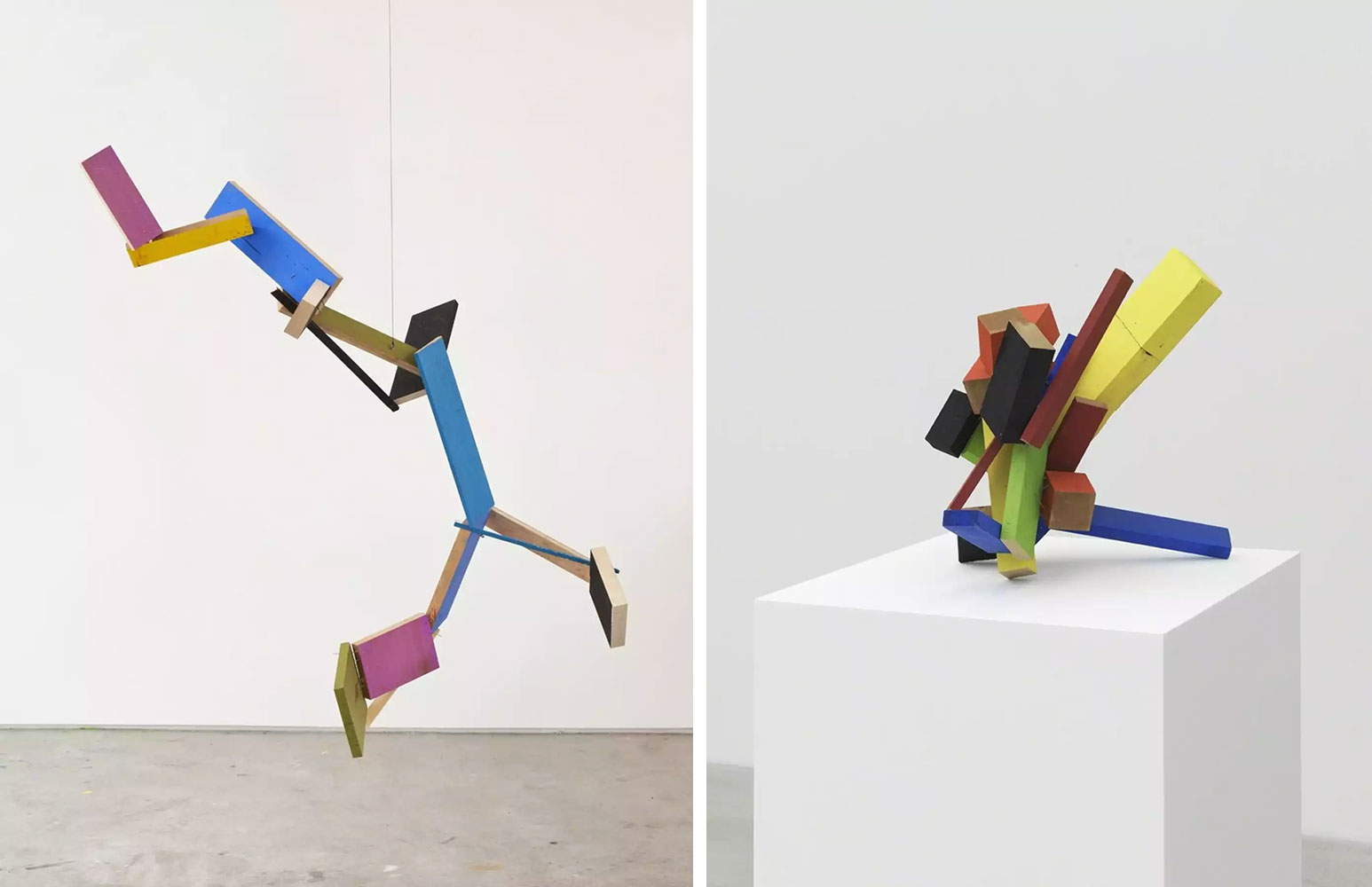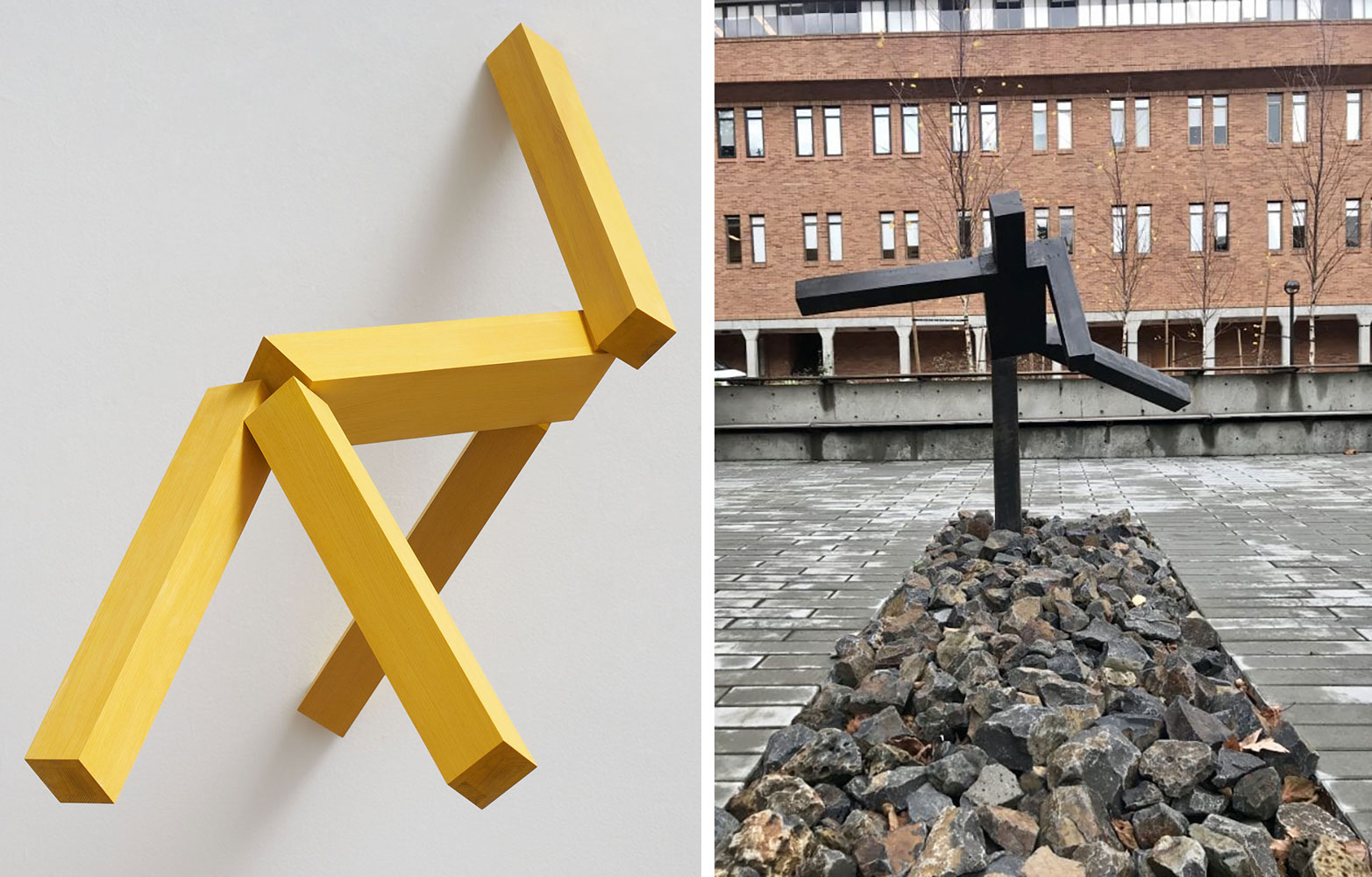TRACES: Joel Shapiro
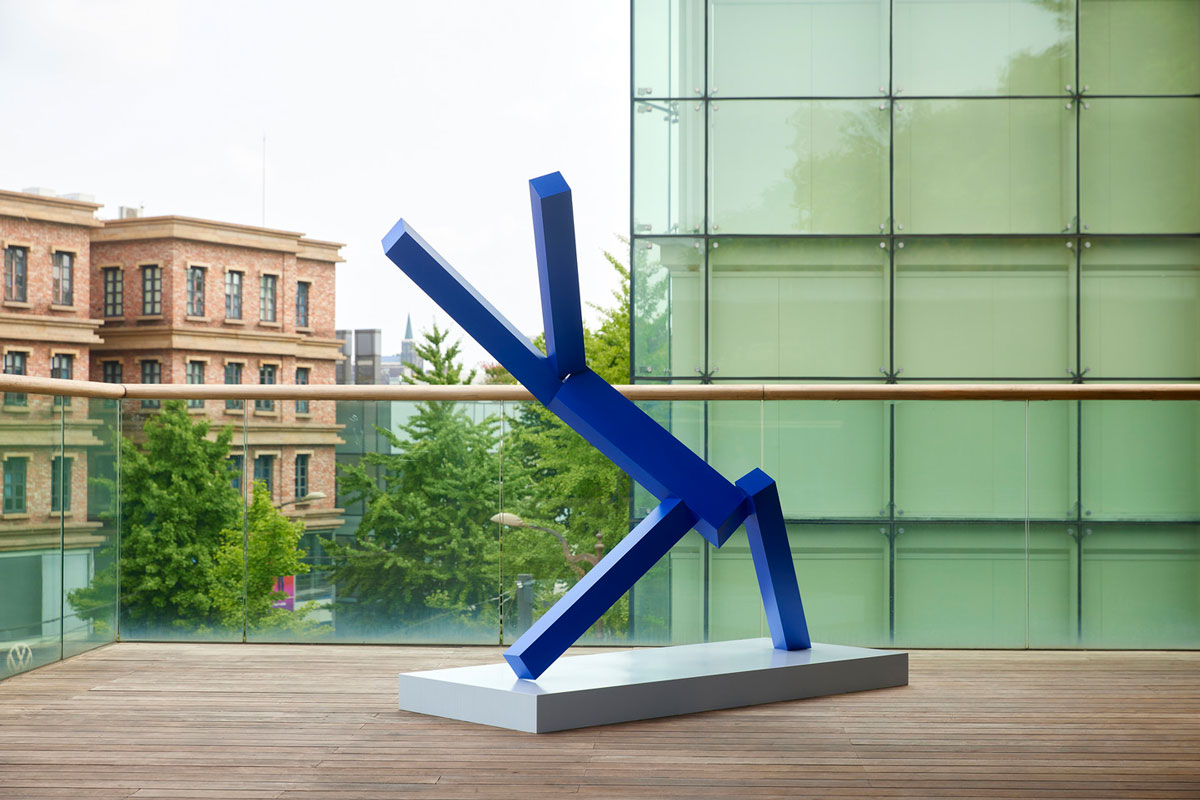 Today is the occasion to bear in mind Joel Shapiro (27/9/1941- ), who creates abstract geometric sculpture that elicits a sense of movement and engages viewers’ physical and psychological relationships with space. In his recent investigations of the expressive possibility of form and color in space, the artist suspends painted wooden elements from the ceiling, wall, and floor, exploring the projection of thought into space without the constraint of architecture. This column is a tribute to artists, living or dead, who have left their mark in Contemporary Art. Through documents or interviews, starting with: moments and memories, we reveal out from the past-unknown sides of big personalities, who left their indelible traces in time and history…
Today is the occasion to bear in mind Joel Shapiro (27/9/1941- ), who creates abstract geometric sculpture that elicits a sense of movement and engages viewers’ physical and psychological relationships with space. In his recent investigations of the expressive possibility of form and color in space, the artist suspends painted wooden elements from the ceiling, wall, and floor, exploring the projection of thought into space without the constraint of architecture. This column is a tribute to artists, living or dead, who have left their mark in Contemporary Art. Through documents or interviews, starting with: moments and memories, we reveal out from the past-unknown sides of big personalities, who left their indelible traces in time and history…
By Efi MIchalarou
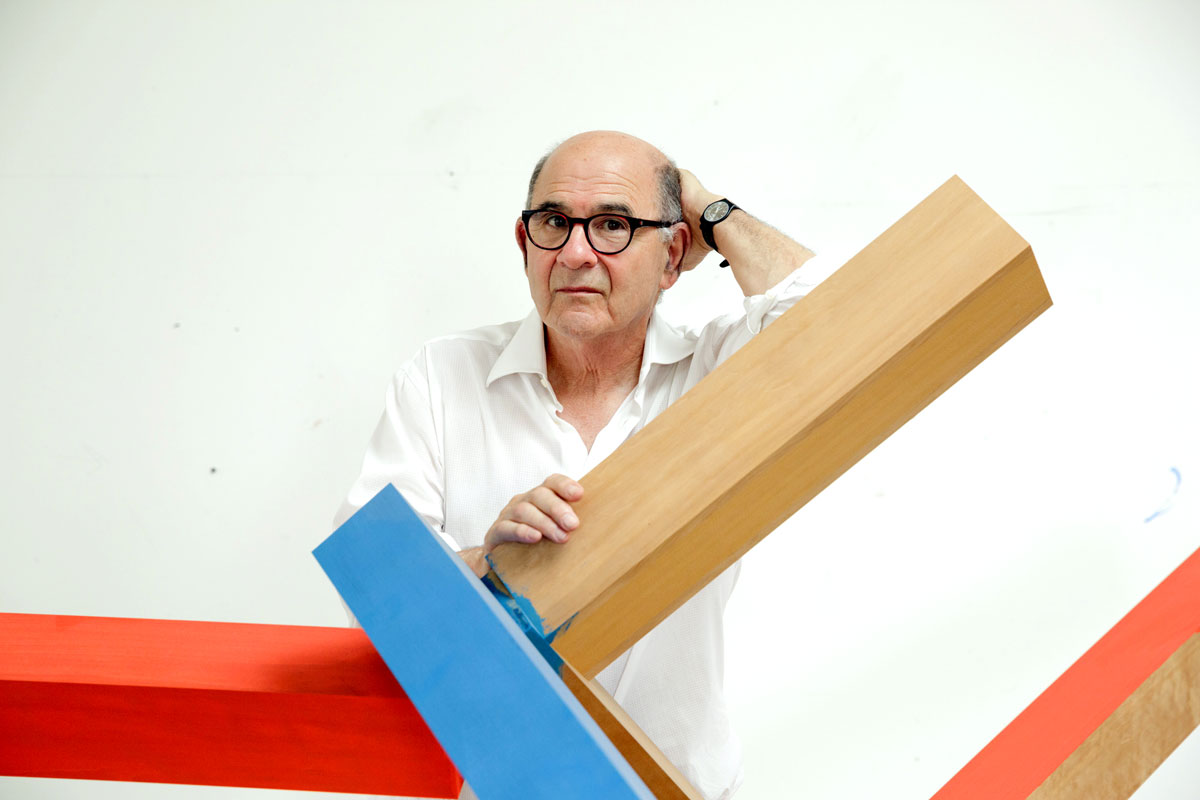 Joel Shapiro grew up in Sunnyside, Queens, New York. He graduated from Bayside High School (Bayside, NY) in 1959, at which time the school’s yearbook awarded him the title of Man About Town. When he was twenty two he lived in India for two years while in the Peace Corps. Shapiro attended New York University to become a physician, but quickly realized his passion for art and discovered his drive to create sculpture that evokes emotion and interaction with an audience, which would later become his main focus as an artist. While serving his Peace Corp time in India, Shapiro saw many Indian art works, and has said that “India gave me the sense of … the possibility of being an artist.” In India “Art was pervasive and integral to the society”, and he has said that “the struggle in my work to find a structure that reflects real psychological states may well use Indian sculpture as a model.” His early work, which also drew inspiration from Greek art, is characterized by some by its small size, but Shapiro has discounted this perception, describing his early works as, “all about scale and the small size was an aspect of their scale”. He described scale as “A very active thing that’s changing and altering as time unfolds, consciously or unconsciously,” and, “a relationship of size and an experience. You can have something small that has big scale.” In these works he said that he was trying “to describe an emotional state, my own longing or desire”. He also said that during this early period in his career he was interested in the strategies of artists Robert Morris, Richard Serra, Carl Andre, and Donald Judd. Shapiro’s work consisted solely of sculpture. His works utilize wood, wire and metal casting, as a medium. Most likely because he enjoyed the simplicity of these materials and their ability to showcase the geometry of the work, rather than having the focus be on the medium itself. As identified in his work, Shapiro’s intent was to create physical pieces of art that an audience could interact with. His earlier sculptures show the inspiration he took from the time he spent in India, by their small size and physiological appearance. Later on, he was said to take inspiration from peers in the community such as, Carl Andre and Robert Morris. His work however seems to juxtapose the bright mediums those artists were using, focusing more on the physiological appearance and expression of the form. By the 1980s, Shapiro began to explore larger and life-size forms in pieces that were still reminiscent of Indian and Greek sculpture but also inspired by the early modernist works by Edgar Degas and Constantin Brâncusi. The bulk of these pieces have been commissioned or acquired by museums and galleries. Later, Shapiro further expanded his repertoire by creating pieces that depicted the dynamism of human form. For instance, his subjects were portrayed in the act of dancing, crouching, and falling, among others that explored the themes of balance, cantilever, projection, and compression. His later works can have the appearance of flying, being impossibly suspended in space, and/or defying gravity. He has said about this shift in his work that he “wanted to make work that stood on its own, and wasn’t limited by architecture and by the ground and the wall and right angles”. These can be demonstrated in the case of the large-size outdoor art he made for the Hood Museum of Art. The bronze piece was an attenuated form that leans over a walkway and its near-falling form is viewed as an energizing element in the museum’s courtyard. This sculpture, like all of Shapiro’s mature works, are untitled.
Joel Shapiro grew up in Sunnyside, Queens, New York. He graduated from Bayside High School (Bayside, NY) in 1959, at which time the school’s yearbook awarded him the title of Man About Town. When he was twenty two he lived in India for two years while in the Peace Corps. Shapiro attended New York University to become a physician, but quickly realized his passion for art and discovered his drive to create sculpture that evokes emotion and interaction with an audience, which would later become his main focus as an artist. While serving his Peace Corp time in India, Shapiro saw many Indian art works, and has said that “India gave me the sense of … the possibility of being an artist.” In India “Art was pervasive and integral to the society”, and he has said that “the struggle in my work to find a structure that reflects real psychological states may well use Indian sculpture as a model.” His early work, which also drew inspiration from Greek art, is characterized by some by its small size, but Shapiro has discounted this perception, describing his early works as, “all about scale and the small size was an aspect of their scale”. He described scale as “A very active thing that’s changing and altering as time unfolds, consciously or unconsciously,” and, “a relationship of size and an experience. You can have something small that has big scale.” In these works he said that he was trying “to describe an emotional state, my own longing or desire”. He also said that during this early period in his career he was interested in the strategies of artists Robert Morris, Richard Serra, Carl Andre, and Donald Judd. Shapiro’s work consisted solely of sculpture. His works utilize wood, wire and metal casting, as a medium. Most likely because he enjoyed the simplicity of these materials and their ability to showcase the geometry of the work, rather than having the focus be on the medium itself. As identified in his work, Shapiro’s intent was to create physical pieces of art that an audience could interact with. His earlier sculptures show the inspiration he took from the time he spent in India, by their small size and physiological appearance. Later on, he was said to take inspiration from peers in the community such as, Carl Andre and Robert Morris. His work however seems to juxtapose the bright mediums those artists were using, focusing more on the physiological appearance and expression of the form. By the 1980s, Shapiro began to explore larger and life-size forms in pieces that were still reminiscent of Indian and Greek sculpture but also inspired by the early modernist works by Edgar Degas and Constantin Brâncusi. The bulk of these pieces have been commissioned or acquired by museums and galleries. Later, Shapiro further expanded his repertoire by creating pieces that depicted the dynamism of human form. For instance, his subjects were portrayed in the act of dancing, crouching, and falling, among others that explored the themes of balance, cantilever, projection, and compression. His later works can have the appearance of flying, being impossibly suspended in space, and/or defying gravity. He has said about this shift in his work that he “wanted to make work that stood on its own, and wasn’t limited by architecture and by the ground and the wall and right angles”. These can be demonstrated in the case of the large-size outdoor art he made for the Hood Museum of Art. The bronze piece was an attenuated form that leans over a walkway and its near-falling form is viewed as an energizing element in the museum’s courtyard. This sculpture, like all of Shapiro’s mature works, are untitled.

